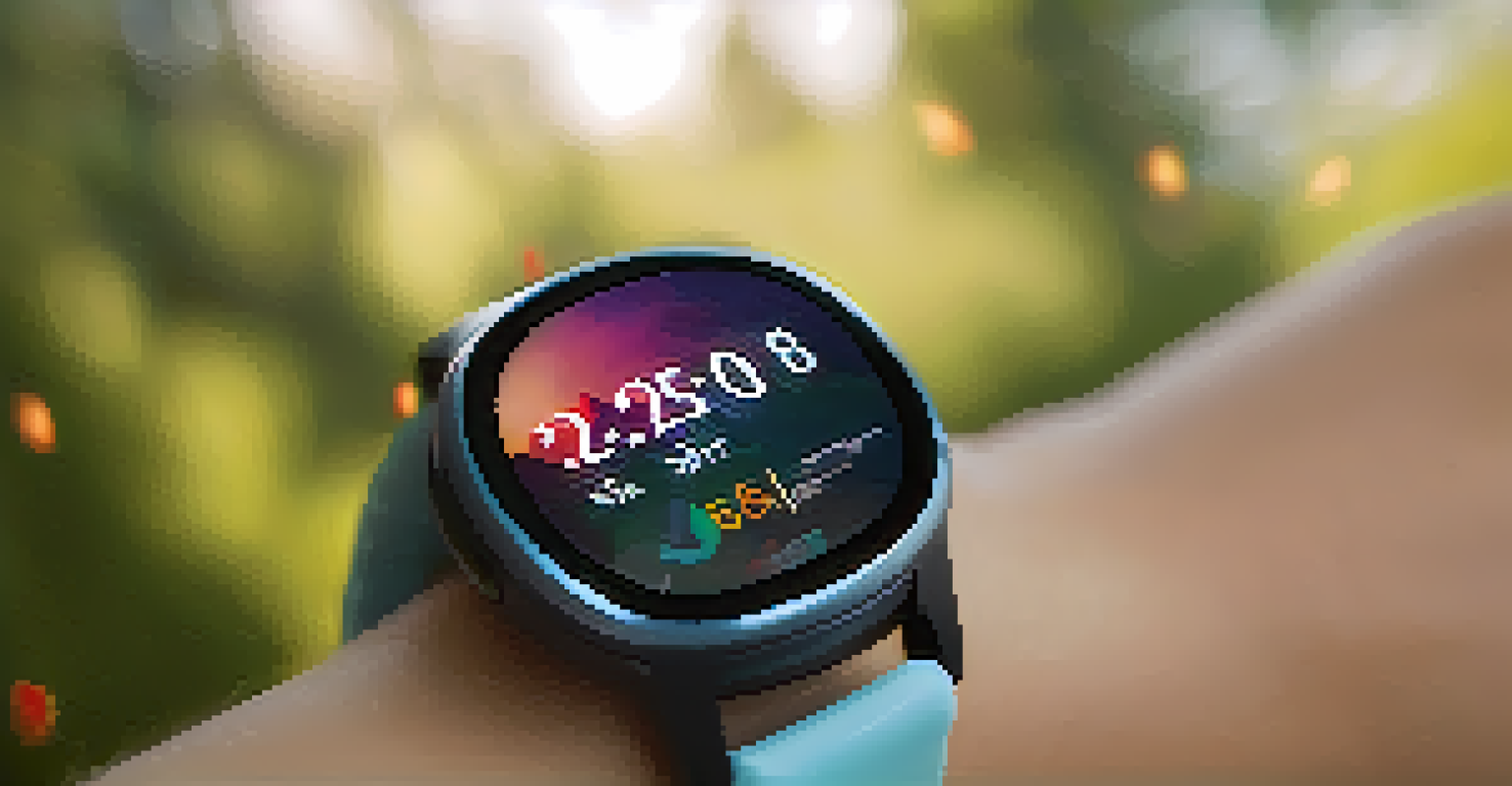Using Wearable Tech to Monitor Hallucinogen Therapy Effects

Understanding Hallucinogen Therapy and Its Benefits
Hallucinogen therapy involves using psychedelic substances like psilocybin or LSD to treat various mental health conditions. Research suggests these substances can create profound emotional and psychological breakthroughs, often leading to lasting positive changes in mood and behavior. As more studies emerge, the therapeutic potential of hallucinogens is gaining recognition in the medical community.
Psychedelics can help us to see new perspectives and to understand our emotions more deeply.
However, monitoring the effects of these therapies can be challenging. Traditional methods often rely on patient self-reports, which can be subjective and inconsistent. This is where wearable technology comes into play, offering a more objective and real-time way to assess therapy outcomes.
By integrating wearables into hallucinogen therapy, clinicians can gather valuable data on physiological responses. This may include heart rate variability, skin temperature, and even brain waves, providing a comprehensive view of the patient's experience during treatment.
The Role of Wearable Technology in Mental Health
Wearable technology has transformed how we approach health and wellness, particularly in mental health monitoring. Devices like smartwatches and fitness trackers can track physiological metrics continuously, allowing for a more nuanced understanding of a person's mental state. This ongoing data collection can highlight patterns that may go unnoticed during traditional therapy sessions.

For instance, a sudden spike in heart rate or changes in sleep patterns can indicate anxiety or stress, which are crucial factors in mental health treatment. By leveraging this data, therapists can tailor interventions more effectively and respond to patients' needs in real time. This proactive approach can significantly enhance the therapeutic process.
Wearables Enhance Therapy Monitoring
Integrating wearable technology into hallucinogen therapy allows for real-time data collection, offering a more objective understanding of patients' physiological responses.
Moreover, wearables can encourage patients to take an active role in their own health management. By providing insights into their physiological changes, individuals may gain a deeper understanding of how their bodies react to hallucinogens and the surrounding therapeutic environment.
Key Metrics to Monitor During Hallucinogen Therapy
When integrating wearable tech into hallucinogen therapy, certain metrics become critical for monitoring. Heart rate variability (HRV) can indicate stress levels and emotional responses, while skin conductance can reflect arousal and anxiety. These metrics can provide immediate feedback during the therapy session, allowing for adjustments as needed.
Wearable technology is not just about tracking data; it's about enhancing our understanding of health and wellness.
Additionally, sleep patterns tracked through wearables can reveal how hallucinogen therapy impacts rest and recovery. Sleep quality is often closely linked to mental health, and understanding its changes can help clinicians assess the overall effectiveness of the therapy. By analyzing these metrics, therapists can gain valuable insights into the patient's journey.
Another important aspect is mood tracking. Many wearables now offer features that allow users to log their emotional states throughout the day. This data can be invaluable for therapists in understanding the long-term effects of hallucinogen therapy and making informed decisions about future treatments.
Benefits of Real-Time Data Collection
One of the most significant advantages of using wearable tech in therapy is real-time data collection. This immediacy allows therapists to respond to patients' needs during a session, rather than waiting for a follow-up appointment. For example, if a patient shows signs of distress through physiological data, the therapist can intervene promptly.
Real-time monitoring also contributes to a more tailored therapeutic approach. By understanding how a patient responds to specific aspects of the therapy session, clinicians can modify their techniques on the fly. This adaptability can lead to more effective treatment outcomes and a better overall experience for the patient.
Real-Time Data Improves Treatment
The immediacy of data from wearables enables therapists to tailor interventions and respond to patients' needs during sessions, leading to better therapeutic outcomes.
Additionally, continuous data collection fosters a stronger patient-therapist relationship. When patients see their therapists actively engaged with their data, it can enhance trust and communication. This collaborative dynamic encourages patients to be more open about their experiences, further enriching the therapeutic process.
Challenges and Limitations of Wearable Tech
Despite the numerous benefits, there are challenges and limitations associated with wearable technology in therapy. One major concern is data privacy. Patients may feel apprehensive about sharing sensitive health information, and ensuring this data remains secure is paramount. Clinicians must navigate these concerns while promoting the advantages of monitoring.
Another challenge is the accuracy of the data collected. Wearables can sometimes produce inconsistent readings, which might lead to misinterpretations of a patient's mental state. It's essential for therapists to be aware of these limitations and not rely solely on wearable data for clinical decisions.
Furthermore, there's the issue of technology accessibility. Not all patients may have access to or be comfortable using wearable devices. Therapists must consider alternative methods for monitoring those who are not technologically inclined, ensuring that all patients receive equitable care.
Future Directions for Wearables in Therapy
The future of wearable technology in hallucinogen therapy looks promising, with ongoing advancements in both the devices themselves and the data analytics used to interpret the collected information. As technology continues to evolve, we can expect more sophisticated wearables that offer even deeper insights into mental health. This could revolutionize how therapy is approached and delivered.
Moreover, integrating artificial intelligence (AI) into wearable tech could enhance data analysis, allowing for more personalized treatment plans. AI can help identify patterns and correlations that may not be immediately apparent, providing therapists with a more comprehensive understanding of their patients' experiences.
Challenges in Wearable Integration
Despite their benefits, wearable technologies face challenges such as data privacy concerns, accuracy issues, and accessibility for all patients.
As research continues to support the efficacy of hallucinogen therapy, the role of wearables will likely expand. This integration may not only improve patient outcomes but also pave the way for broader acceptance and exploration of psychedelic therapies in mainstream mental health care.
Integrating Wearable Tech into Existing Therapies
Integrating wearable technology into existing hallucinogen therapy protocols requires thoughtful planning and collaboration among healthcare providers. It’s essential to approach this integration with a clear understanding of both the technological capabilities and the therapeutic goals. By doing so, clinicians can leverage wearable data to enhance the therapeutic experience.
Training for both therapists and patients is vital in this integration process. Therapists must be equipped to interpret the data accurately and respond appropriately during sessions, while patients should feel confident in using the devices. This ensures that everyone involved is on the same page and can maximize the potential benefits of wearables.

Additionally, establishing clear guidelines for data usage and privacy will be crucial. Patients should be informed about how their data will be used, who will have access, and the measures in place to protect their privacy. Building this trust is essential for a successful integration of wearable tech into hallucinogen therapy.